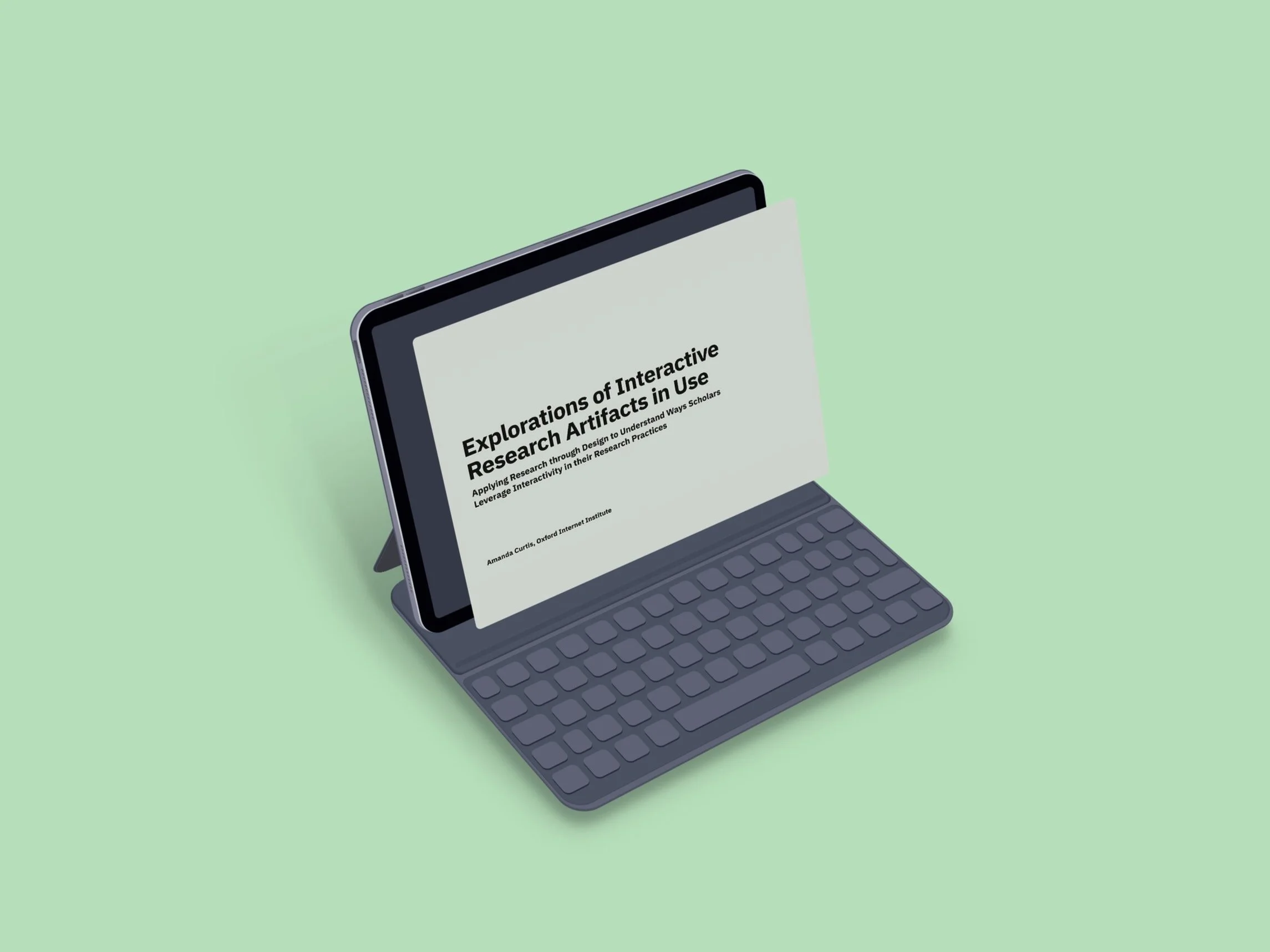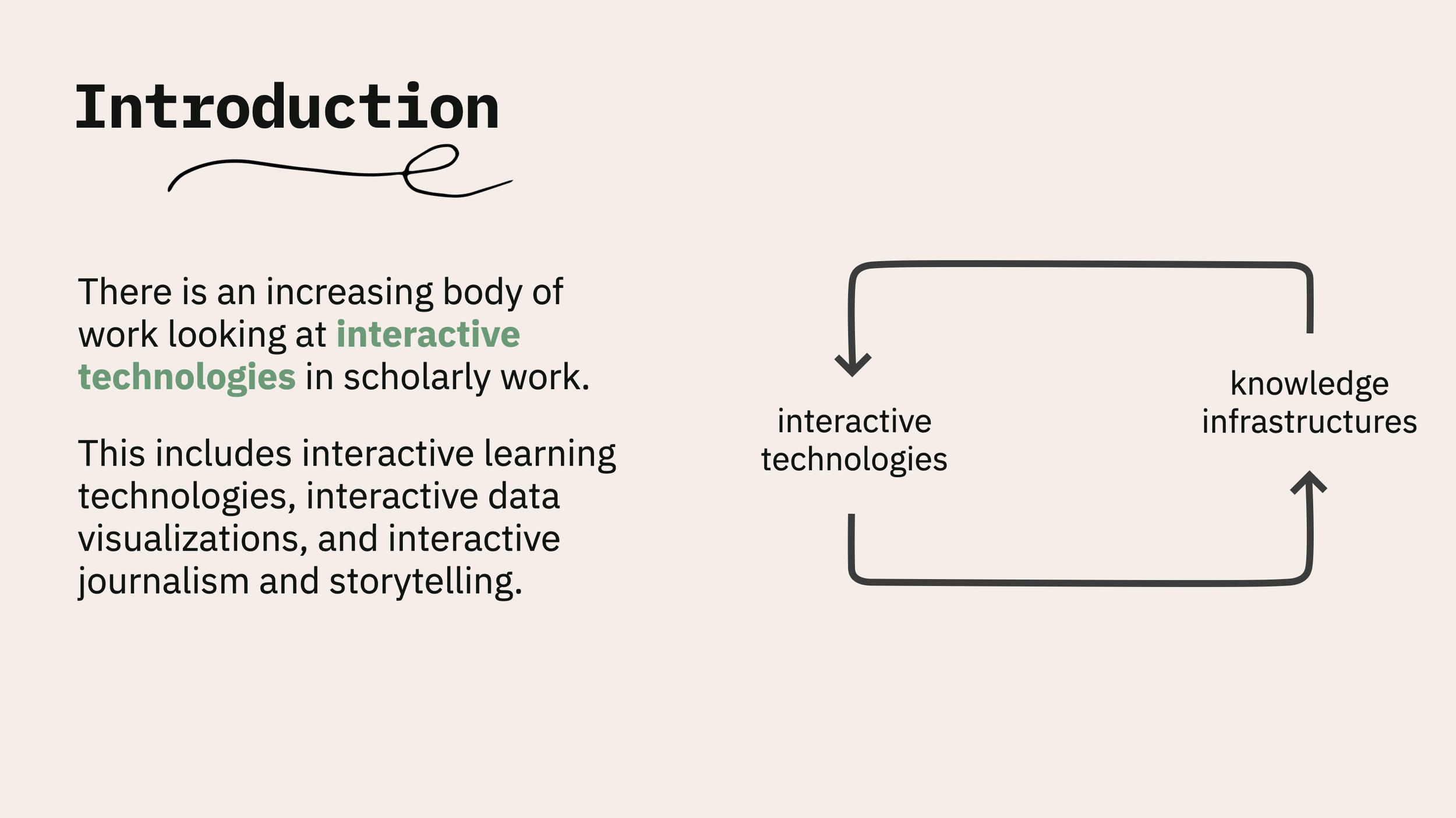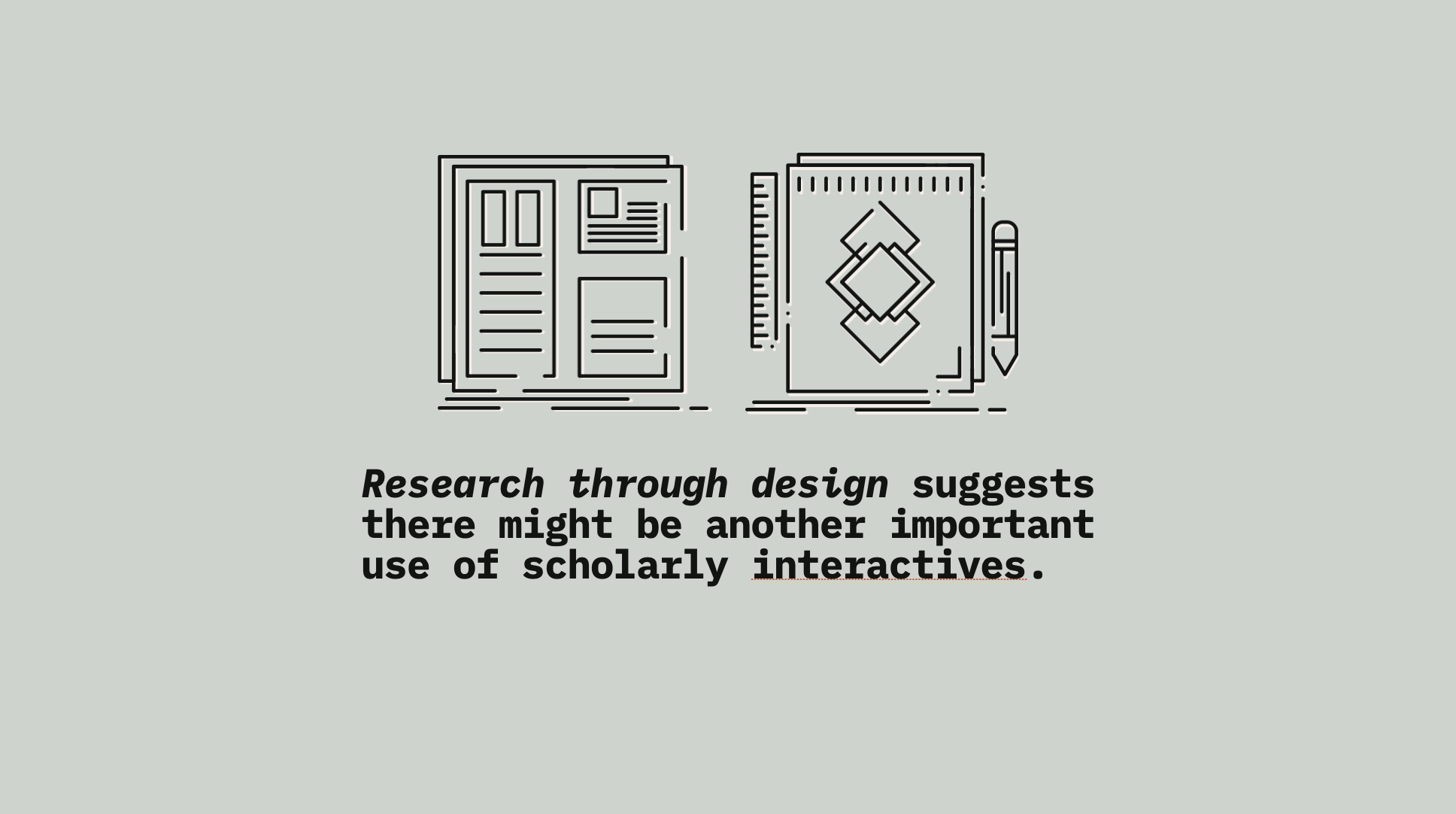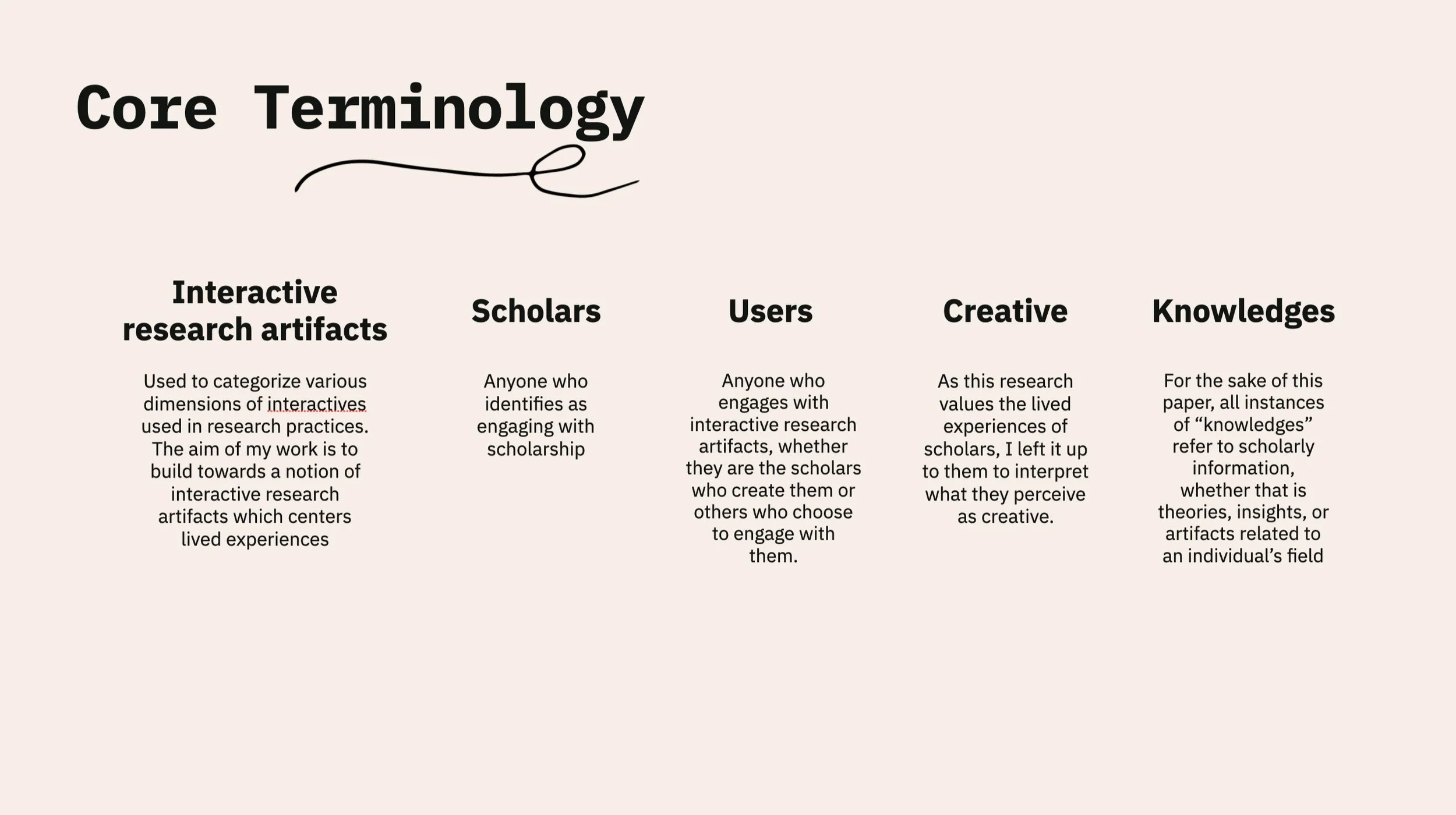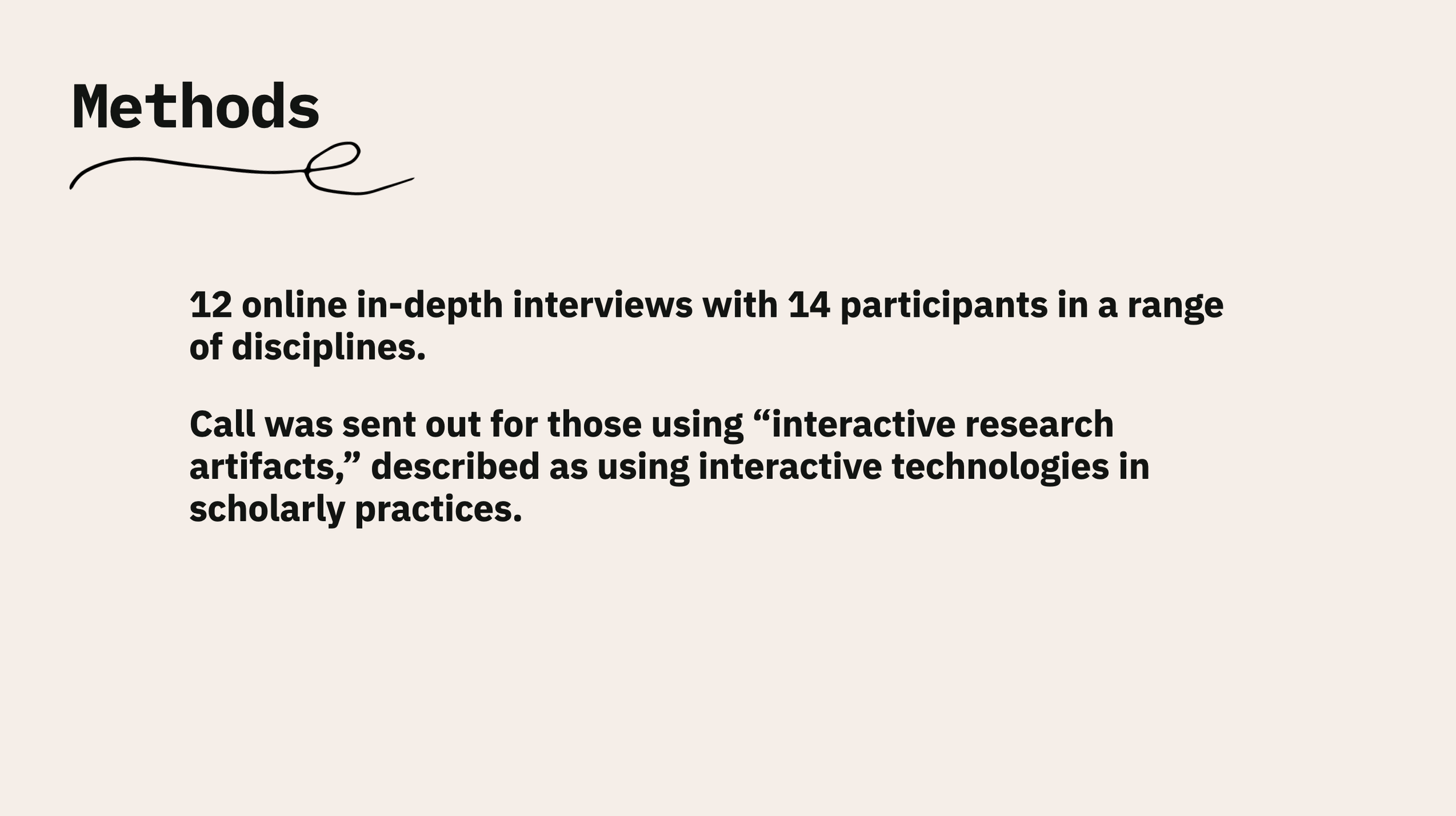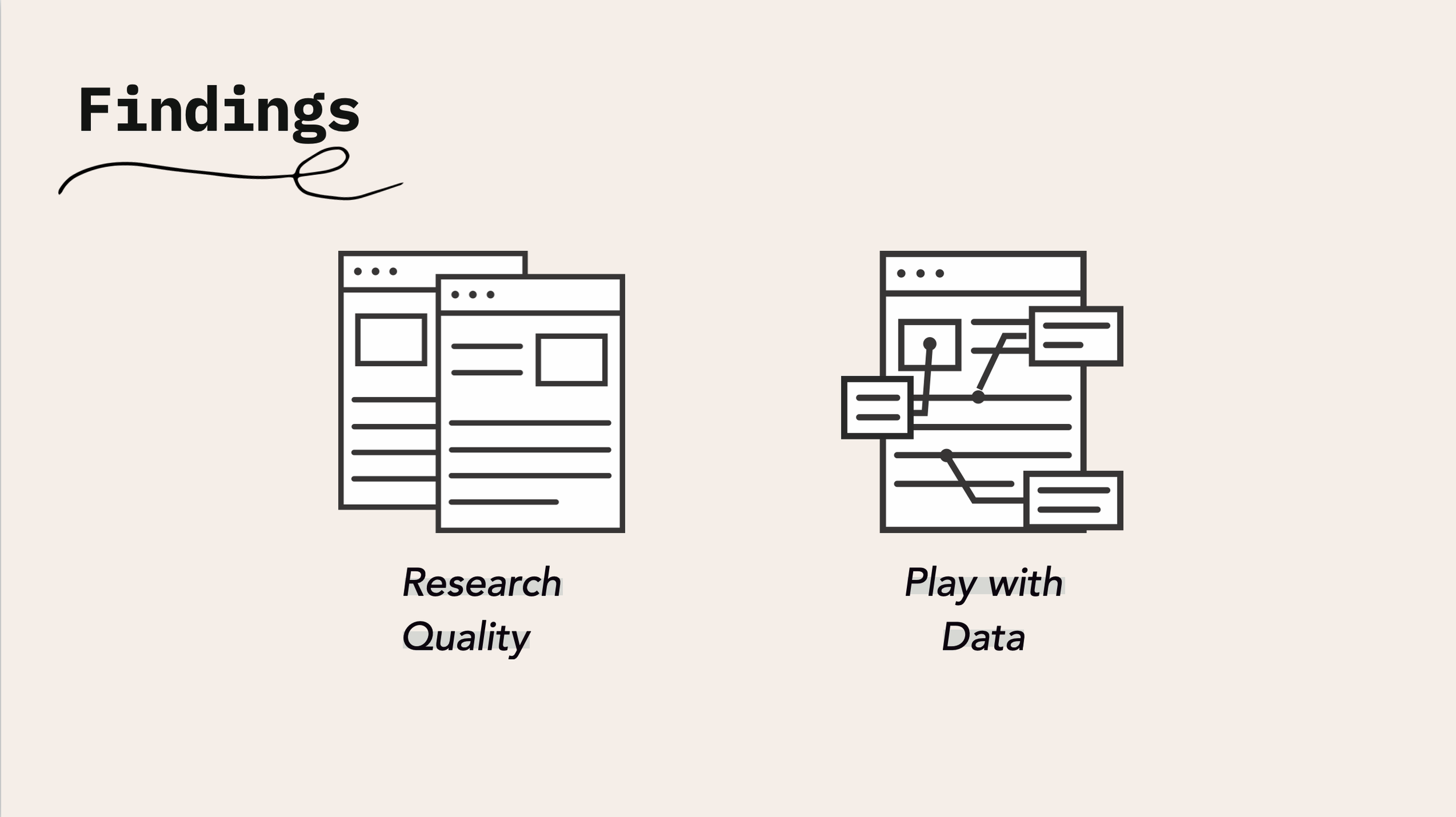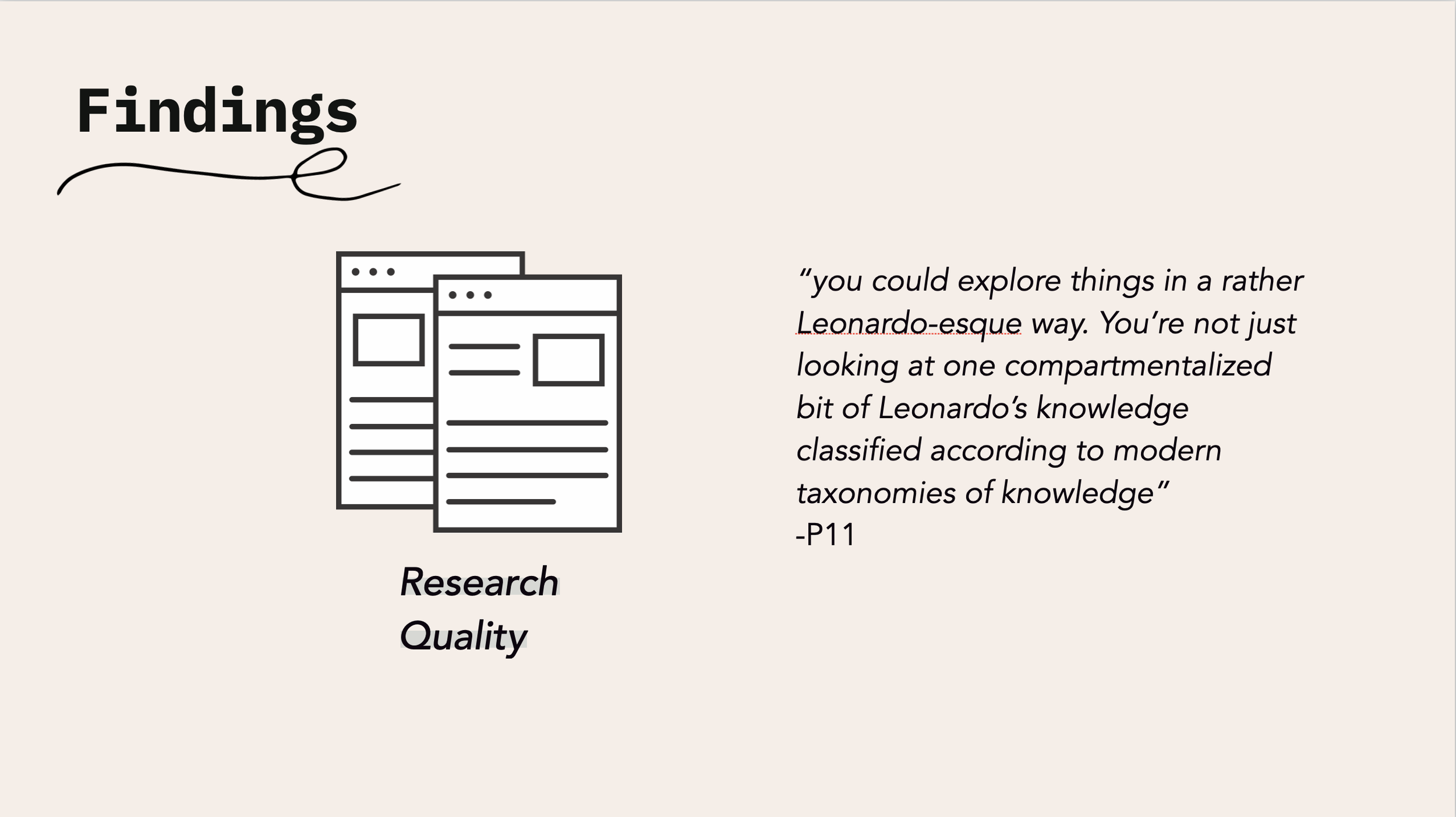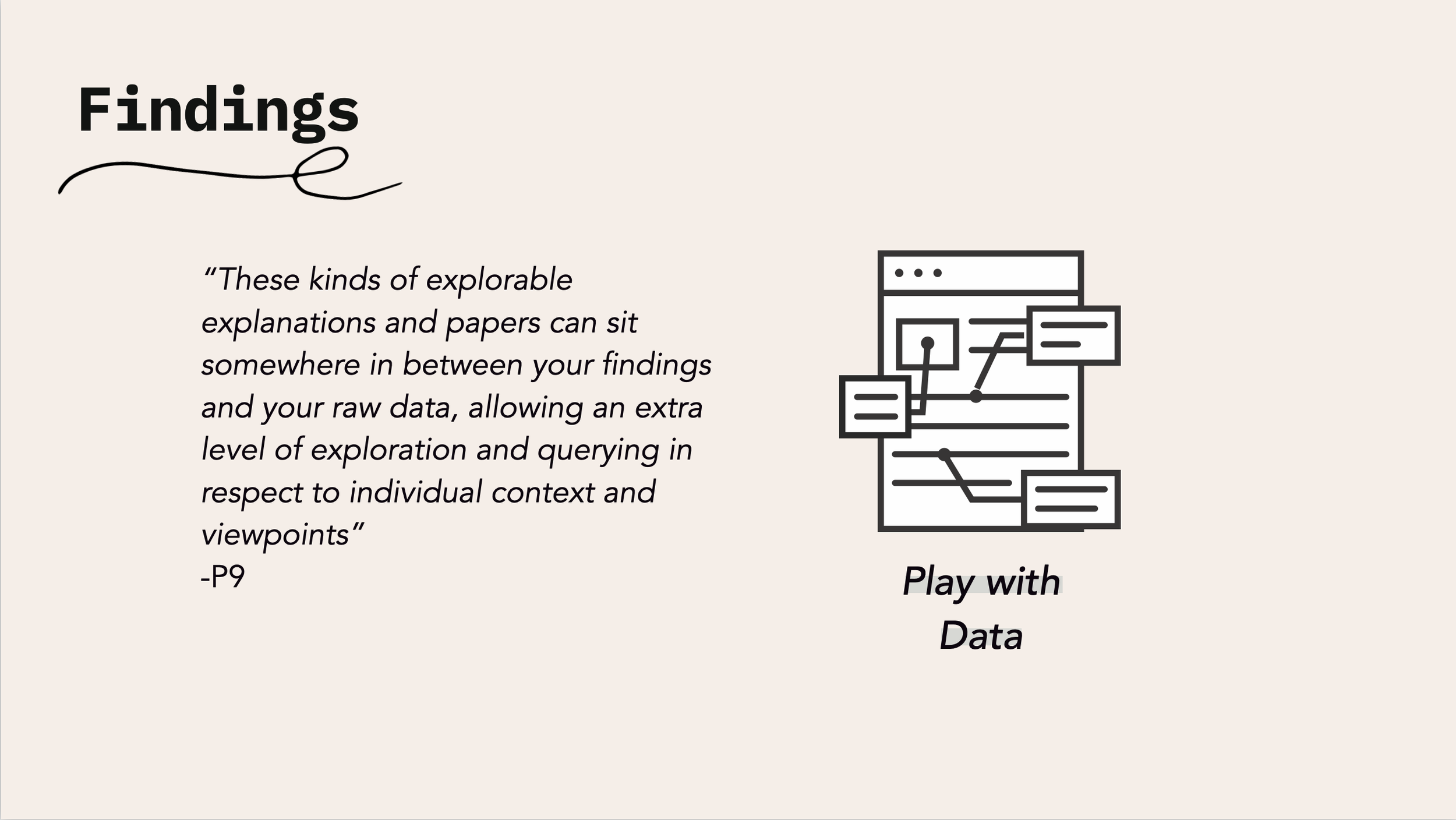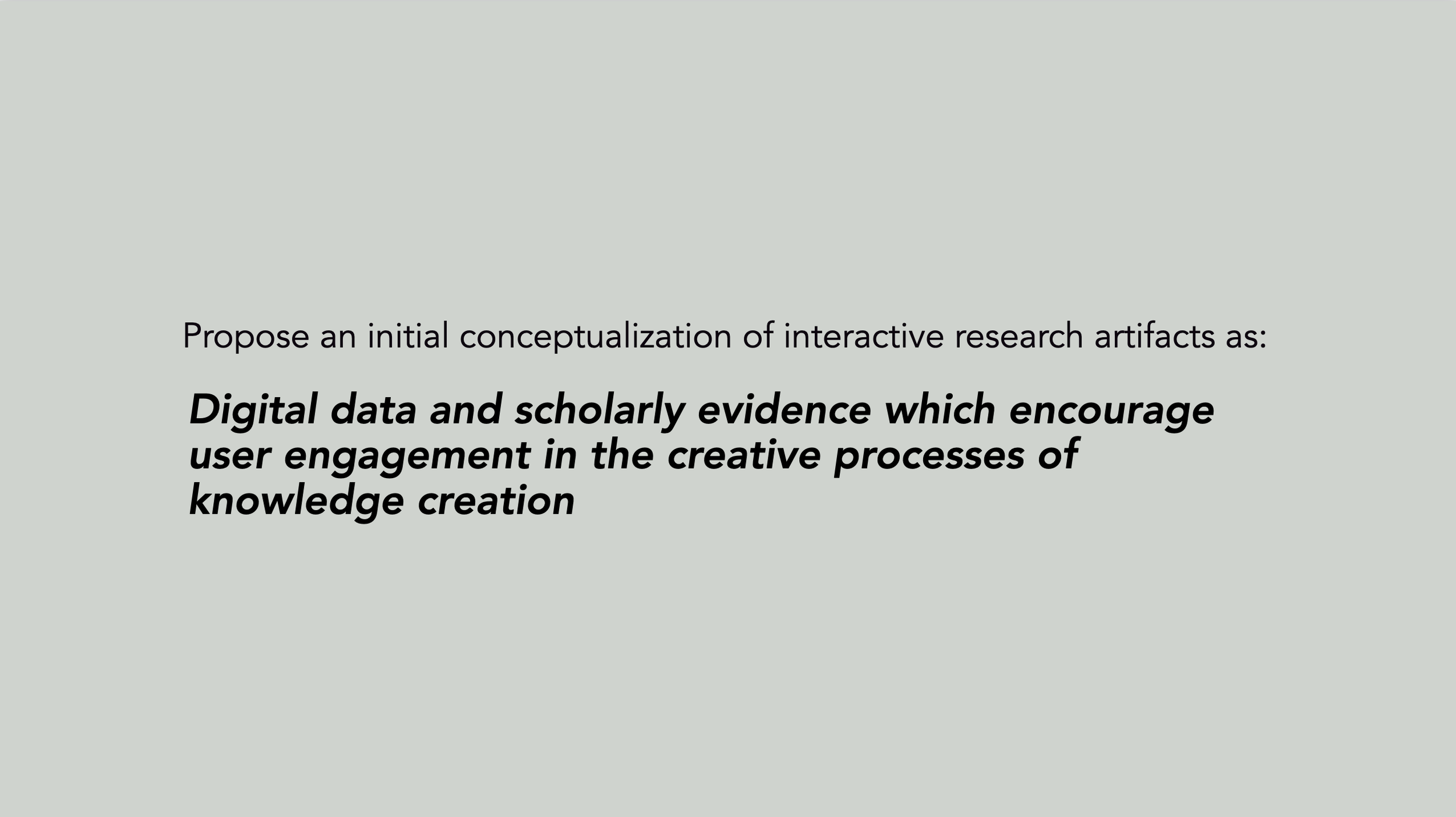Explorations of Interactive Research Artifacts in Use
Applying Research through Design to Understand Ways Scholars Leverage Interactivity in their Research PracticesOverview
New technologies and digitization have the potential to vastly alter our knowledge infrastructures. Specifically, this work focuses on the effects of interactive technologies on research practices, referred to as “interactive research artifacts.” Current research investigates the communicative affordances of such technologies, but minimal work critically examines the creative ways scholars are engaging with these artifacts. Through in-depth interviews with 14 scholars, and Design Studies literature, this work arrives at an understanding of interactive research artifacts as knowledge creation tools, rather than simply communicative tools. As such, to design for a future where interactive research artifacts become widely used scholarly tools, a comprehensive understanding of the ways in which these artifacts are used as means of knowledge creation is critical.
This work was presented at Creativity & Cognition ‘22. The full paper is available here. For a pdf copy, please contact me.
Focus: interactive media, knowledge creation, research practices, design studies.Some research has begun to investigate the work of interactive artifacts in scholarly contexts, including online movements such as Explorable Explanations, multimedia scholarship, and interactive research articles. This growing body of work examines the changing nature of scholarly communication, providing us with unique insights into the nuanced communicative affordances of these interactive research artifacts.
However, this research argues that introducing Design Studies, particularly Frayling’s research through design, uncovers another important use of these scholarly interactives. Specifically, there is minimal work which critically explores the variety of uses of interactive research artifacts in practice, actively omitting the various ways current scholars think about, design, and use these artifacts.
That leads to this project’s research questions:
This paper reports on 12 online in-depth interviews with 14 participants, in which their current practices regarding interactive research artifacts were explored.
A call was sent out for those using “interactive research artifacts,” described as using interactive technologies in scholarly practices. Rather than presenting participants with a definition of this, this work allowed participants to identify themselves as creators and/or users of these artifacts.
All participants identified as both scholars and those actively creating or using interactive research artifacts.
It’s important to note that the term interactive research artifacts is used to categorize various dimensions of interactive digital artifacts used in research practices. It is a purposefully broad term, as there is currently minimal literature which seeks to conceptualize these artifacts, and the aim of my work is to build towards a notion of interactive research artifacts which centers lived experiences
Most interviewees explicitly detailed how interactive research artifacts often serve a hidden purpose: they are tools for uncovering new insights or inconsistencies in the underlying data that is often missed when using traditional, non-interactive artifacts. They are also used to reflect on the work conducted, speed up the research process, and connect information in ways not possible by the affordances of traditional artifacts.
By providing alternative, non-linear modes of exploring knowledge, interactive research artifacts allow P11, an art historian focused on Leonardo Da Vinci, to produce a caliber of research not quite possible by traditional means. For them, this meant allowing users to immerse themselves in da Vinci’s mindset, centered around da Vinci’s cultural prototyping of a renaissance type of person with a multiplicity of knowledges.
They not only serve as a tool to improve the process of knowledge creation and development of new research outcomes, but they also provide varying platforms which allow scholarship to be expressed in a manner befitting the subject.
Most participants directly addressed the role of play in their research practices. These artifacts enable the discovery of new knowledges through personal experimentation and exploration.
Data does not only refer to quantitative data – some participants described how remixing existing interactive research artifacts fosters dialogue between the users and the content itself. Not only does this element of interactive research artifacts allow users to leverage existing scholarly work, but it also encourages them to constellate information differently by providing a multiplicity of options. This may enable the discovery of new findings otherwise obscured.
For these participants, knowledge creation is enabled not necessarily with interactive research artifacts as seen above, but through them by means of creative exploration and playful experimentation.
As suspected from previous literature in this space, interactive research artifacts can act as communicative tools for scholarly knowledge. While only some participants detailed their understandings of interactive research artifacts to include this communicative tool classification; all discussed, both implicitly and explicitly, the ways interactive research artifacts alter knowledge creation practices during the research stage, rather than only the output stage.
While findings of this work support previous studies which examine the scholarly communication impact of these artifacts, this work takes this a step further. Interactive research artifacts are understood to be tools for knowledge creation, which is enabled by improving scholarship quality and promoting playful exploration. As such, this work suggests generalizing these as broadly knowledge creation tools. I posit an initial working definition of interactive research artifacts as “digital data and scholarly evidence which encourage user engagement in the creative process of knowledge creation.”
Conceptualizing interactive research artifacts as tools for exploring scholarship as a means of knowledge creation allows for a more nuanced and detailed understanding of their possibilities.
Despite increased focus on interactive research artifacts, our lack of critical understanding of them means we do not know how to properly facilitate their design. Future work must be done to critically examine the creation and use of interactive research artifacts in detail, expanding on this initial definition, so that we may design for the future.
Interesting work is currently underway exploring how to design for interactive research artifacts as communication tools; now is the time for design inquiries into the future of these artifacts also as knowledge creation tools. This work posits that the next question to be answered should be: in what ways can we best facilitate the creation of these interactive research artifacts?

